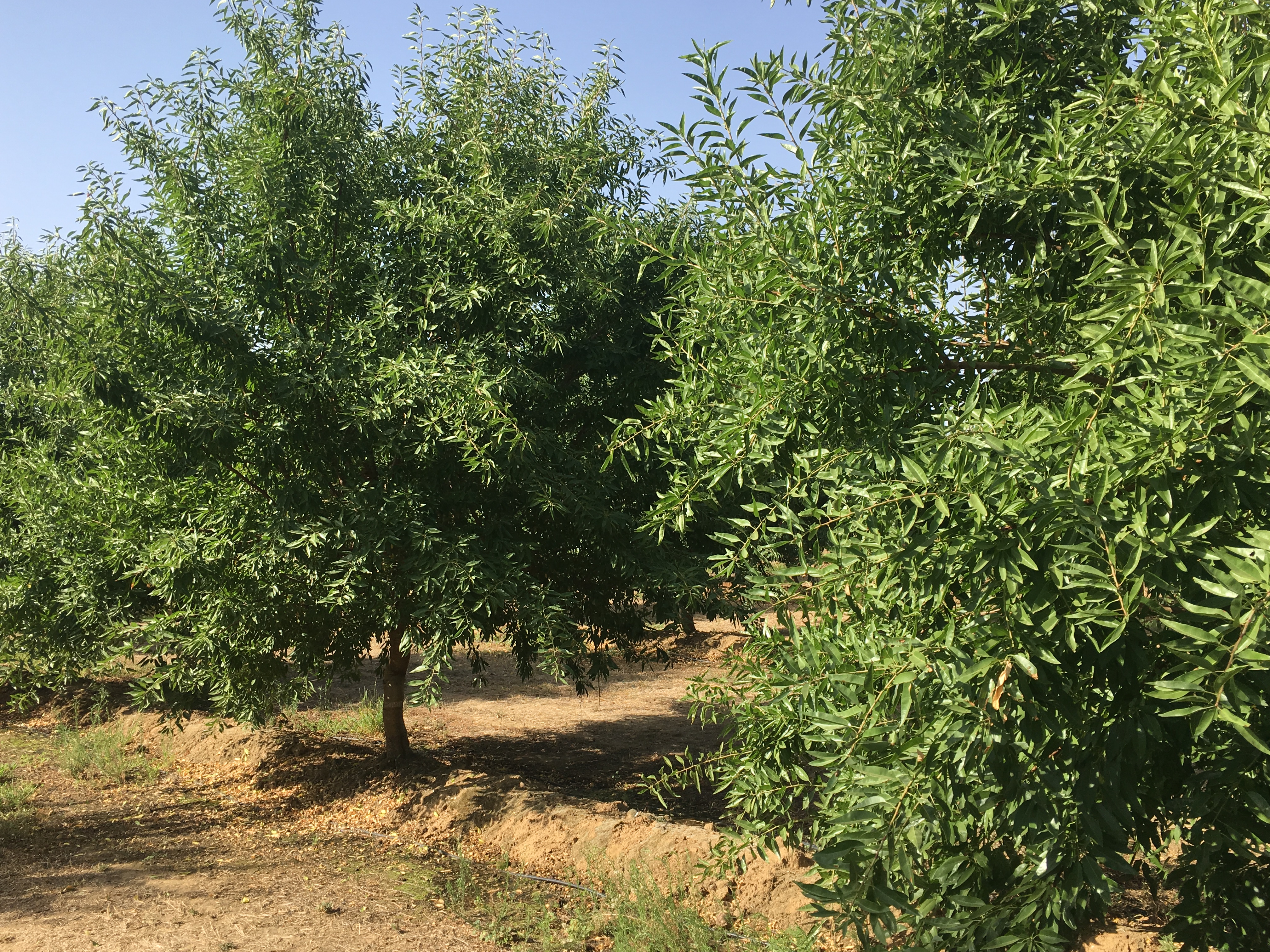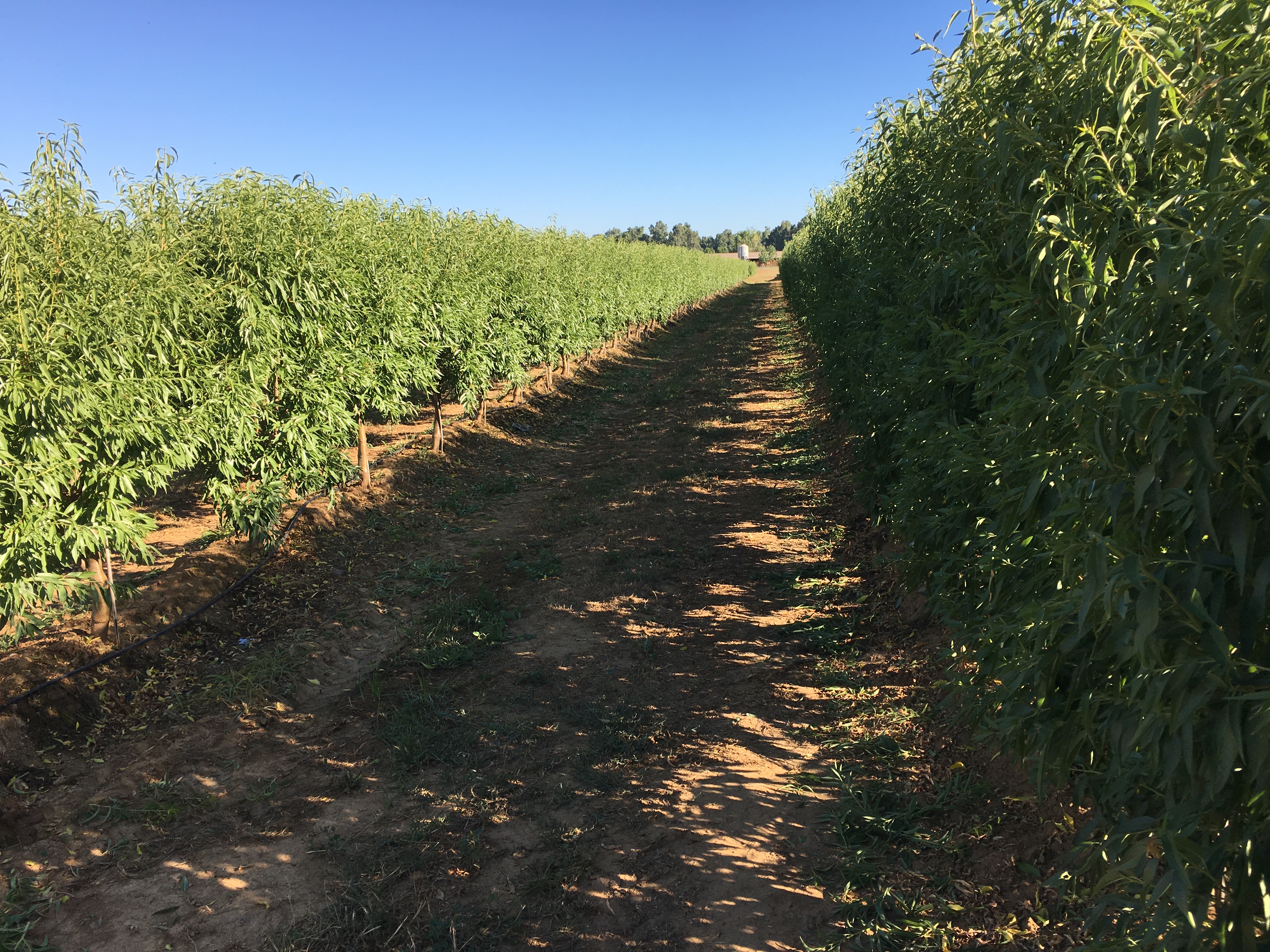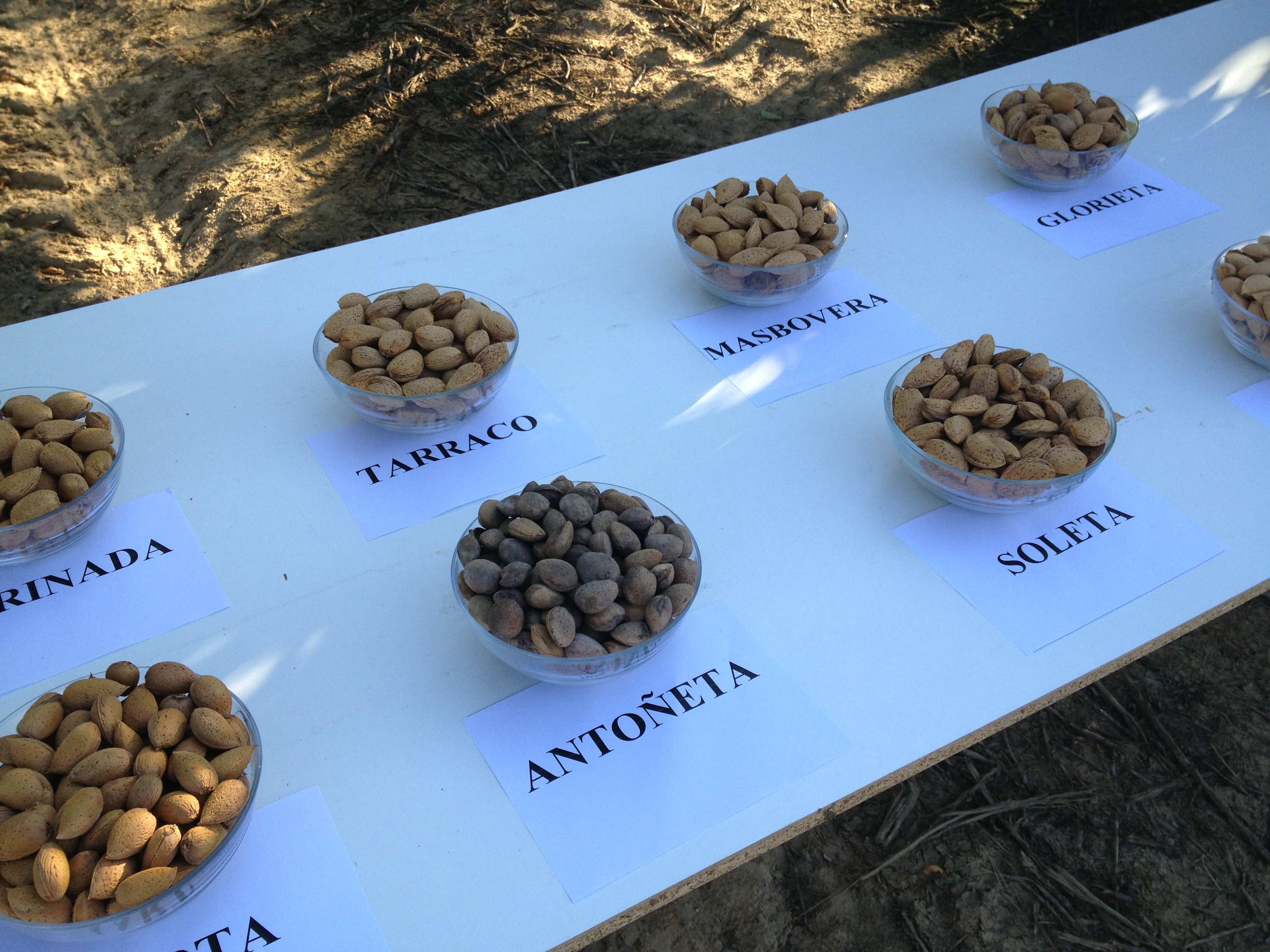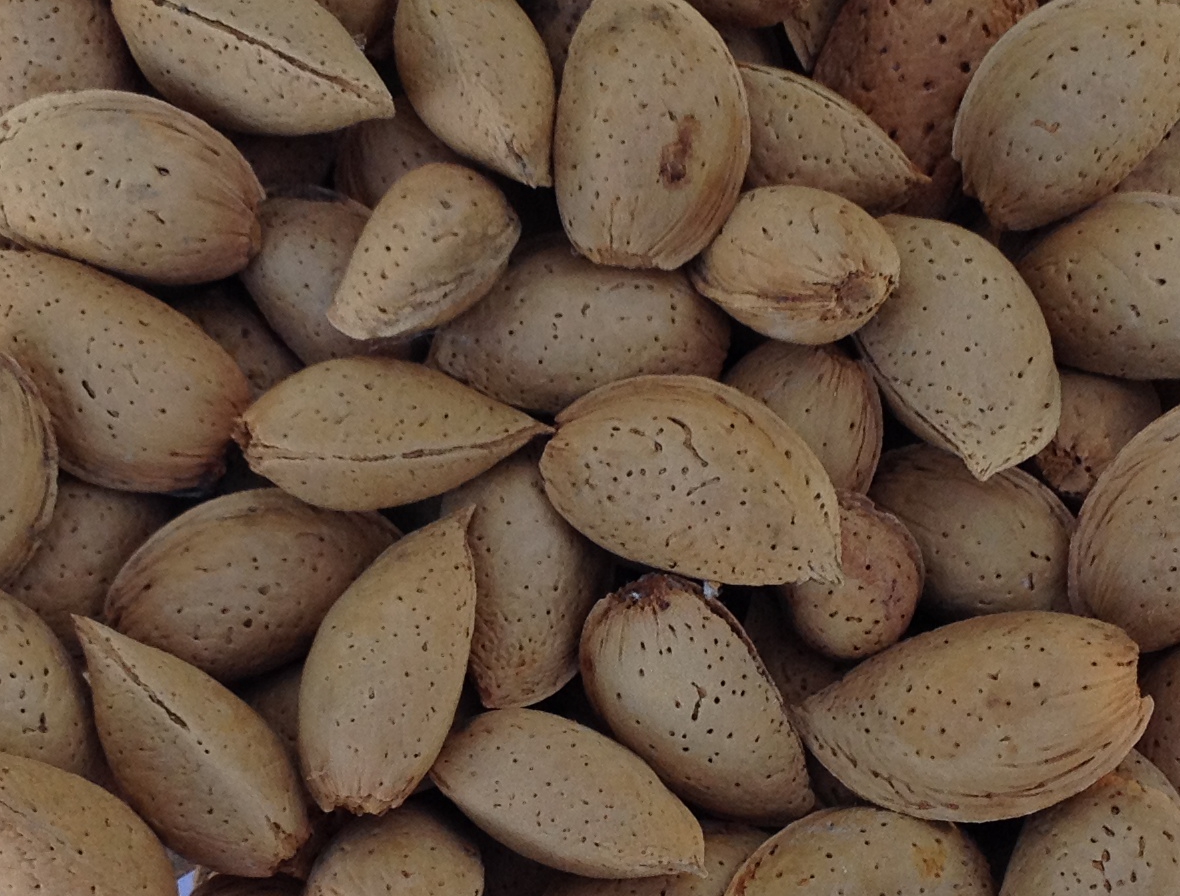
Almond tree
 General information
General information
The cultivation of the almond tree (Prunus amygdalus) has acquired major relevance in Extremadura in recent years amongst farmers and farming businesses as a consequence of the development of new plant material deriving from improvement programs, and the use of the new production techniques that have been recently introduced in the various production models. On top of that, the favourable weather and soil conditions for the production of seed fruit in Extremadura have contributed to such an extent so as to create great interest in growing this fruit both in irrigation and fertile dry land.
The almond tree has traditionally spread over stretches of unfertile dryland, where production was heavily impacted by climate. The early blossom varieties were very exposed to frosts in February and, in the case of self-sterile varieties, the rain and the wind could impact final production.
 New production models: intensive and super intensive plantations
New production models: intensive and super intensive plantations
Cultivation has currently been preferentially moved to irrigation lands where the technology applied to new plantations has drastically modified the design and the production techniques. The end purpose is to increase production and to mechanise cultivation. These advances in production and performance are the result of using techniques that relate to new forms of tree pruning, the use of varieties and rootstock that are adapted to the various production areas, super intensive plantations based on the comprehensive mechanisation of the crop, etc.
 Plant material
Plant material
Almond tree improvement programmes mainly focus on obtaining self-fertile varieties with delayed and very delayed blossoming. CICYTEX’s Finca La Orden began in 2008 a study of the agronomic and production behaviour of a number of cultivars originated in the IRTA centres of Catalonia, with the “Vayro”, “Constantí”, “Marinada”, “Tarraco”, “Masbovera”, “Glorieta” and “Francolí” varieties, the CITA centre of Aragón, with the “Soleta” and the “Belona” varieties, and the CEBAS centre in Murcia, with “Marta”, “Antoñeta”, “Penta” and “Tardona” varieties. The purpose of testing was to study the agronomic behaviour of the plants in our crop area.
Later on in 2014, we began a comparative study of Spanish and American varieties that we had to abandon, due to the impact of a new plague, i.e. sparrows, on the production yield. These birds pecked and destroyed an enormous number of flower buds in December and January that heavily impacted production and none of the dissuasive methods used had any effects.
In 2021 we have introduced new varieties again such as “Vialfás” (CITA) and “Makako” (CEBAS), “Avijor” and “Guara”. In all these plantations the rootstock used was the “Garnem” peach x almond hybrids and GF-677.
 Growing techniques
Growing techniques
In this division we mainly focus on a test leading to the evaluation of how to manage an intensive almond plantation through its various pruning stages for tree modelling, taking into account the various plant habits of the varieties. These projects were also initiated in 2021 and included the “Avijor”, “Guara” and “Penta” varieties, with plant habits of medium, horizontal and vertical branching patterns, respectively. We are aiming at discerning the almond production differences using four different types of cutting interventions, ranging from traditional pruning to crown cutting at 35 cm, 35 and 40 cm, and 35, 40 and 45 cm in height and lateral pruning.
On the other hand, as an alternative to fertile dryland crops with full mechanisation of the processes, a test has been applied using a super intensive plantation model with a 4 x 1.5 m distance pattern. In this case, the chosen varieties are “Avijor”, “Vialfás” and “Penta”. The plants have been reproduced using a self-renewal technique in order to better adapt them to dryland farming conditions, as well as for a major reduction in the plantation costs.
With regards to earlier testing dating to 2014 in super intensive irrigation farming plantations for the purposes of studying the various combinations of varieties/ rootstock, this had to be abandoned, as we were unable to control the action of the sparrows on the flower buds and the newly set fruit. The high extent to which these trees were affected was also a factor driving the recommendation to discontinue this test.









